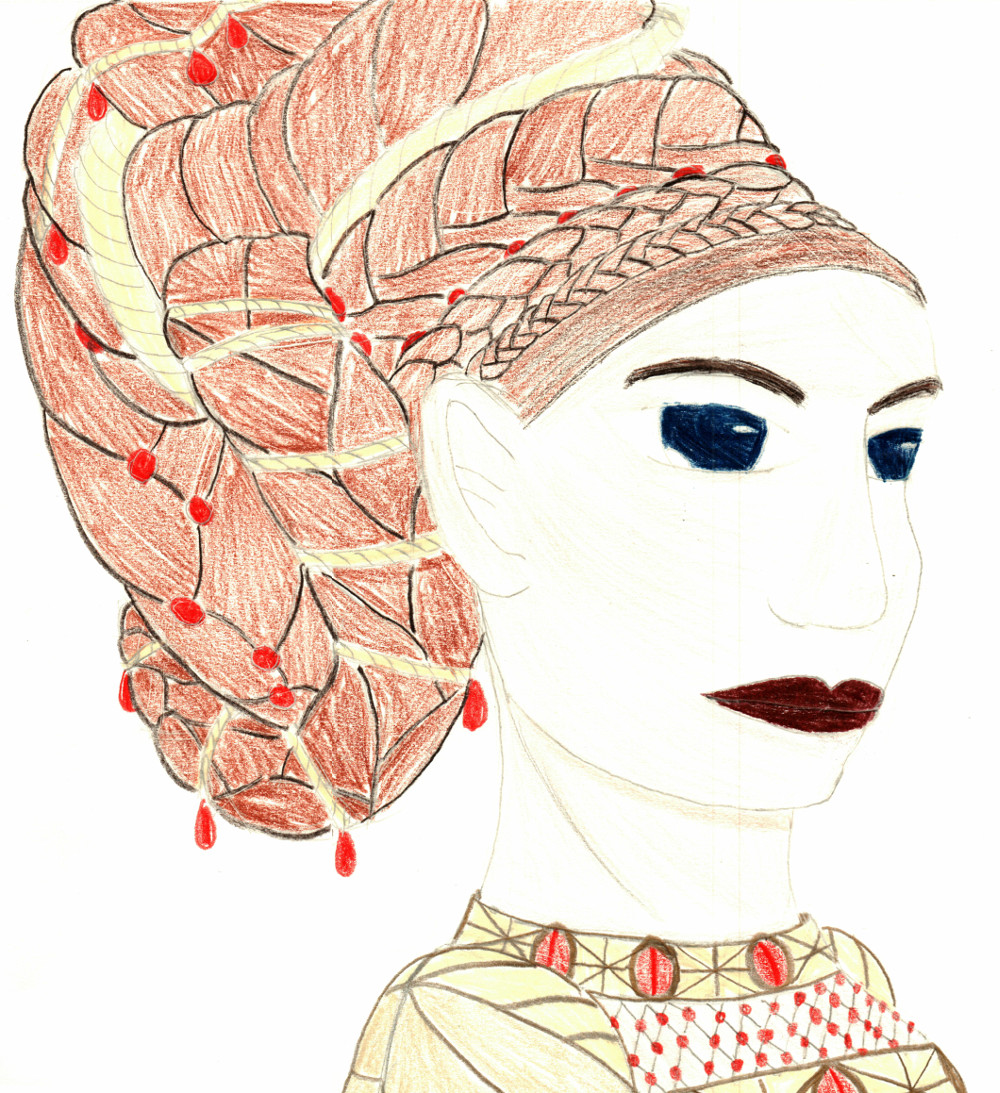Moha'
Frequently considered a kind of dwarf and called such in the common tongue, the Moha' are a squat, hardy race, who live beneath the surface of their planet Amsed. Emigrants to other planets prefer to live either subterraneanly or at the very least in solid construction.
Basic Information
Anatomy
Similar to humans, with two arms, two legs, and bilateral symmetry. Shorter on average. They have low sexual dimorphism and six widely acknowledged sexes: khosal, kohan, rotam, sotar, sovakh, and to'al.
Genetics and Reproduction
Of the sexes, khosal, kohan, and rotam are capable of bearing young, though rotam sometimes struggle with it. Rotam, sotar, and sovakh are capable of siring young, though rotam are less fertile. To'al are infertile. Khosal have fewer distinct secondary sex characteristics than the kohan and outwardly resemble the to'al and sovakh. The sovakh have fewer distinct secondary sex characteristics than the sotar and outwardly resemble the to'al and khosal. The kohan, rotam, and sotar are all capable of nursing young.
Gestation period is ten months long.
Growth Rate & Stages
They're considered to come of age at 36, though their bones don't finish settling and their healing rate doesn't start to slow until they're roughly 108. They pass through childhood twice as slowly as humans.
Ecology and Habitats
The Moha' live underground primarily, and handle high pressures well. They do not handle sunlight well, being prone to eye strain, sunburns, and skin cancer when exposed for long periods. The Moha' also do not handle cold well - their subterranean home is an even temperature at 62 degrees Fahrenheit. They can handle extremely high temperatures for short periods, slightly better than the average human.
Dietary Needs and Habits
The Moha' are able to extract calories from a wider range of foods than humans.
Additional Information
Social Structure
Highly social, prone to gathering in groups larger than human-typical (generally due to safety concerns).
Facial characteristics
Stronger than humans', with a firm bone structure. Faces are usually broad. Eyes tend to be deep-set.
Perception and Sensory Capabilities
Very keen vision even in low-light conditions, though they're sensitive to bright lights. Good hearing, accurate enough to navigate through echolocation.
Civilization and Culture
Naming Traditions
Names are heavily gendered - very few names are unisex or multigendered, though there are often different gendered versions available for the same name. Names very commonly refer to precious metals and stones or to desirable traits. Family names exist, and are passed down from the mother to the child.
Beauty Ideals
Lots of well-groomed hair, on the head and the face. Shaving or going bald is considered shameful and ugly.
Hands that show evidence of some kind of work (generally calluses) are considered attractive. Signs of intelligence or being well-studied are considered especially attractive.
Gender Ideals
Rotam are usually the heads of the household, but not always.
To'al customarily make ceremonial offerings on behalf of the household; if the household contains no to'al (which is rare, but happens), then usually a neighbor, friend, or even hired help fulfills that role. To'al are also traditionally the only priests, though this has been changing in some communities.
Courtship Ideals
Married couples wear matching beads and braids on the upper right temple. The ideal is that each person makes a bead that they exchange when they become engaged, and then that they make or at least design matching beads together. Couples also sometimes inherit beads from one side's parents.
Major Language Groups and Dialects
The primary language is Mah'ur
Common Dress Code
Unbraided hair is considered anywhere from obscene to slovenly in most cultures. Most wear complicated braids with a variety of beads communicating things like their gender, profession, history, marriage, and other traits. Married dwarves will braid and then cover their hair when out in public, especially if among people not of the same gender.
How minimally clothed they go varies between cultural groups; due to the lack of sun and the even temperature, there aren't many pressures for clothing as environmental protection, so dress is usually for ornamentation. Ornamentation is generally considered good, though, showing high status, so any that can get away with it will wear multiple layers of expensive, heavily embroidered fabric and large jewelry. Many groups, including the Ashleke dwarves, have modesty taboos against exposing more skin than the face. There are taboos against exposing any skin at all when in view of the sun.
Common Customs, Traditions and Rituals
Pure, plain white cloth is a symbol of humility, and often worn when entering sacred spaces or on the holiest of days.
Common Taboos
Exposing skin to or directly looking upon the sun is highly taboo (and dangerous, due to the dwarves' lack of protections).
Interspecies Relations and Assumptions
They have poor relationships typically with other species from their planet, having been frequently persecuted and blamed for a variety of disasters and ills. Those from other planets are frequently scornful of the whole of Amsed, including the Moha'.
The different genders have their own forms of address, which have standard translations into Common. The Common terms of address for a kohan is 'Lady,' for a khosal is 'Lagief,' for a rotam is 'Ladem,' for a sovakh is 'Ladan,' for a sotar is 'Lord,' and for a to'al is 'Labryn.'
Lifespan
320 years
Average Height
4'7", for all sexes
Average Weight
120lbs, for all sexes
Average Physique
Broad, muscled, and thick-boned.
Body Tint, Colouring and Marking
Most are exceptionally pale due to the lack of sun. Many have trouble tanning when they do go aboveground, and are at risk for skin cancer if they don't wear protective clothing and creams.
Remove these ads. Join the Worldbuilders Guild









Comments